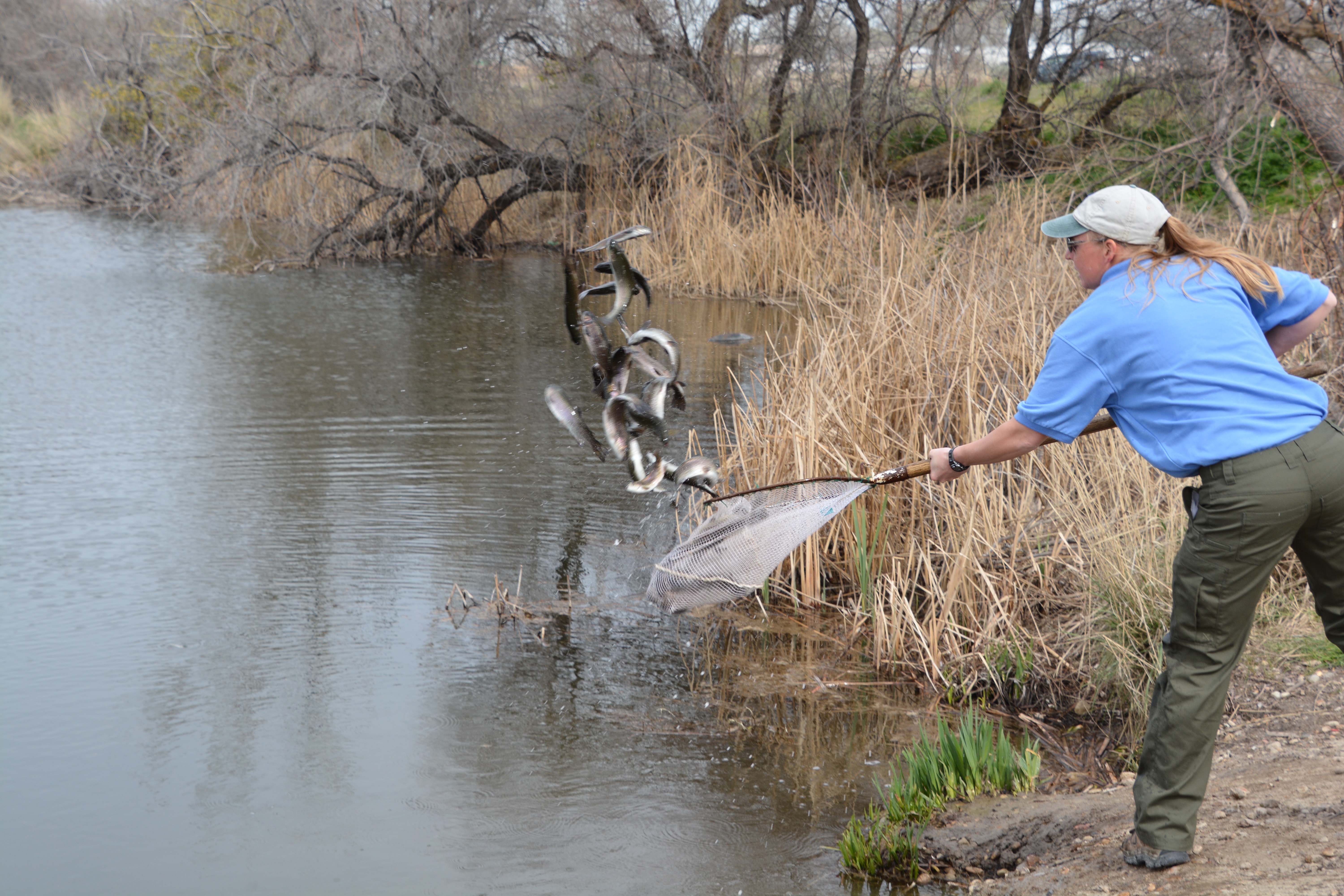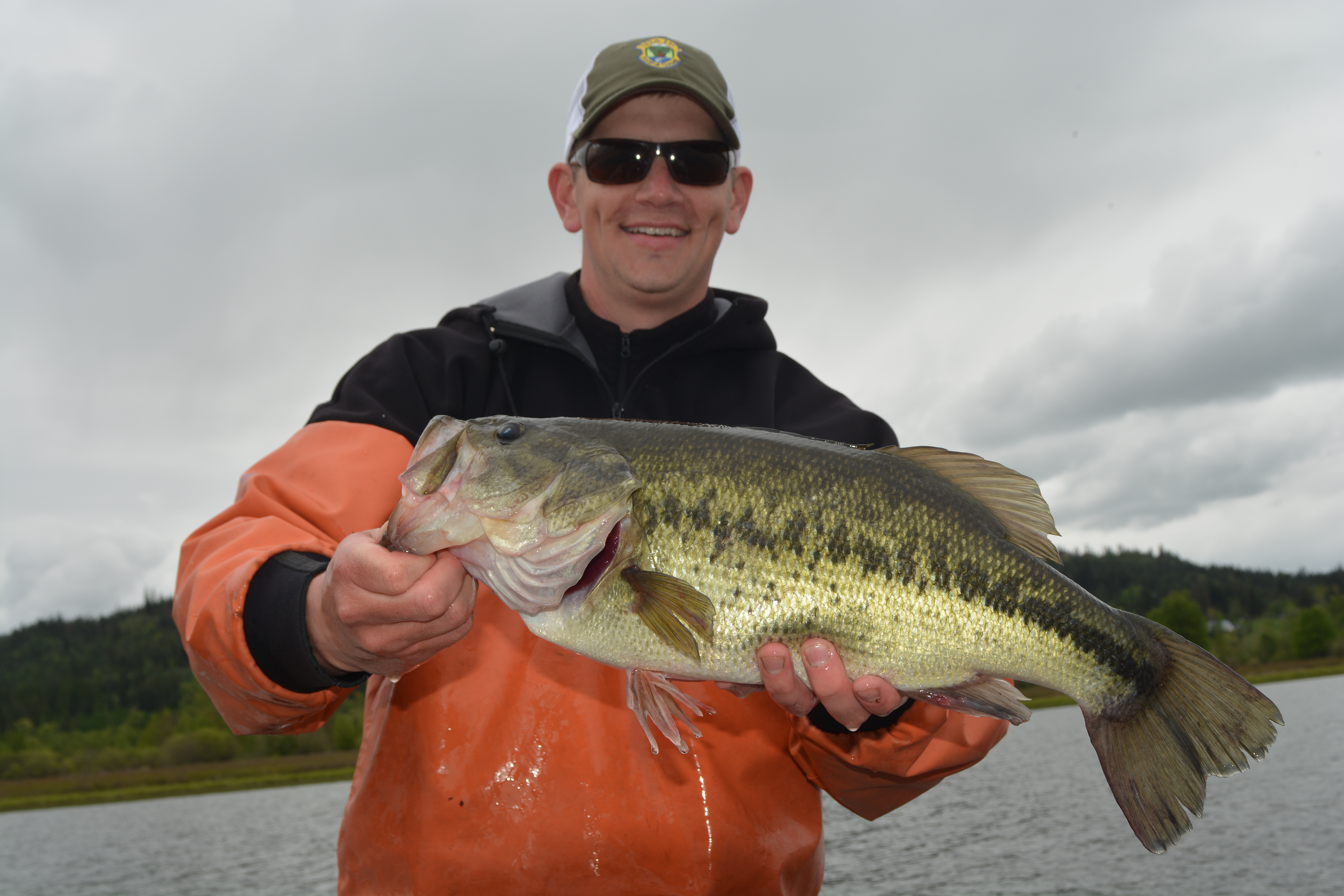
Reservoirs are filling across southern Idaho, and fisheries managers are looking forward to the benefits that big water brings.
“When we have these great water years, we have so much more habitat,” said Dave Teuscher, fisheries manager for the Southeast Region. “And the amount of forage is just incredible.”
Teuscher said he wishes he could stock about 3 or 4 million more trout in reservoirs so he could take advantage of all the water. He explained that in years with a lean snowpack, reservoirs are often drained to minimum pool during summer. Depending on the reservoir, that can mean as little as 10-percent of the pool remains to sustain fish.
There's a bottleneck for the reservoir's fish population because the fish are condensed into tight space until the following spring, and also subject to stress from warm water, low oxygen and predation.
But when reservoirs fill, and in some cases spill over, prime spring conditions with abundant cool water and plentiful forage last longer. Reservoirs may end the summer with up to four times their normal pools of water, which gives fish more space to live, grow and avoid predators. Those conditions produce more and larger trout, and the benefits often last several years, even if drier conditions resume.
“The difference is off the charts,” he said. “It’s night and day.”
Joe Kozfkay and Doug Megargle, fish managers for the Southwest and Magic Valley regions, are taking the opportunity to restock waters that were drained so low in recent years they could no longer sustain fish, and in some cases, completely dried.

They will immediately start restocking trout. Kozfkay said there will be plenty available considering high-flowing rivers are unsuitable for stocking trout. Managers will reallocate hatchery trout scheduled for stream stocking to reservoirs, lakes and ponds until rivers recede, which could be mid summer.
Kozfkay also plans to restock some reservoirs with bass and bluegill, including Blacks Creek Reservoir, Paddock Reservoir and Indian Creek Reservoir, as well as several ponds in the Treasure Valley area.
Magic Valley manager Megargle said Little Camas Reservoir, Mormon Reservoir and Thorn Creek Reservoirs will get trout this year.
Managers have a large, but not unlimited, supply of rainbow trout available in hatcheries. They can provide immediate fishing opportunity by stocking standard 10-to-12 inch “catchables,” or their larger hatchery cousins, known as “jumbos,” which take longer and are more expensive to produce, but get caught at a higher rate by anglers than smaller fish.
Managers can also stock inexpensive “fingerling” trout that are about 3 to 6 inches, but will quickly grow and provide fishing for anglers. In full reservoirs brimming with food, those fish can grow up to an inch a month.
Restocking warmwater fish, such as bass, bluegill, crappie and perch, is different than stocking trout. Because these fish are not typically available from Fish and Game’s hatcheries, they have to be transplanted from other waters.
“It’s rather labor intensive,” Kozfkay said.

Managers also don’t restock warmwater fish to provide immediate fishing opportunity. The goal is for transplanted adult fish to spawn and produce a larger population. With a little help from nature, that can happen in a few years because warmwater fish are prolific, and refilled reservoirs are usually very productive.
“The fish populations can blow up in a hurry, and that’s exciting,” Kozfkay said.
The timing can be tricky because managers want the new crop of fish transplanted before the fish spawn in the spring.
“You have a short window of time from when they move into the shallows and can be captured, but before they spawn,” he said.
While big water years are good for growing trout and restarting warmwater fish and panfish populations, no one’s crystal ball is clear enough to know how much water there will be in the future.
A few lean snowpacks and/or hot, dry summers could put some reservoirs back in the same predicament. Managers have to balance that reality with the time and money required to restock reservoirs with fish.
“It’s a gamble,” Kozfkay said. “But the optimist in me is excited to do it.”

